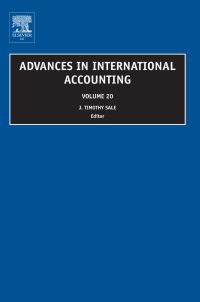Question
As mentioned previously, the typical guest spends between $8.00 and $15.00 per visit on beverages and food. Arianas profit is higher on beverage items and
As mentioned previously, the typical guest spends between $8.00 and $15.00 per visit on beverages and food. Arianas profit is higher on beverage items and she strives to achieve a margin of 50% overall. Thus, on an $8.00 ticket, Arianas profit would be $4.00. Ground or whole bean coffee in 1-pound bags is $25.00, t-shirts are $15.00 and ceramic mugs are $12.00. Ariana can achieve a 50% margin on logo merchandise and 75% margin on packaged coffee. Since Ariana has such strong relationships with small growers and shares profit with the growers, she makes approximately $18.75 on each bag of coffee she sells. The high mark-up on coffee is also why Ariana is considering a wholesale model and the merits of developing coffee programs for other local businesses.
Ariana would like your assistance in identifying B2B market segments and determining the wholesale price(s) she should charge business-to-business customers for a coffee program. For example, New Roots Coffee has identified four B2B segments: coffee shops & cafes, specialty food & grocery, restaurants, and offices.
- Identify the wholesale cost that Ariana should sell the roasted coffee beans for 1, 5 or 10 pound bags of coffee. Discuss how you determined your prices. [Note: if your market segment is a fine-dining restaurant and they will likely be purchasing bulk bags of 5 or 10 pound coffee to serve brewed coffee to their own patrons, you would determine prices of either the 5 or 10 pound bag.] Recognize that these business customers must be able to make a profit on their sales of the product as well.
- Forecast the wholesale revenue that Ariana will likely achieve within the first year of pursuing a business-to-business strategy. You will need to make some assumptions about the number of accounts she can acquire and the estimated pounds of coffee each account would purchase per month. Identify your assumptions and show your calculations. Finally, calculate the gross profit that Ariana will earn on the wholesale coffee sales. Summarize this information in a table. [Please include both a discussion and summary table.]
For Question #3, I'm expecting some simple or basic math - see below:
Table Revenue Projection of Wholesale Coffee Business
Will your customers be purchasing 1 lb, 5 lb, 10 lb bags or a variety of each? Show your calculations.
| Potential Accounts | # of 1, 5 or 10 lb bags purchased per month | Total Revenue (wholesale price of 1, 5 or 10 lb bag * quantity purchased | Profit per month
(Total revenue costs) | Annual Gross Profit
(12 months * profit per month) |
| Account #1 |
|
|
|
|
| Account #2 |
|
|
|
|
| etc. |
|
|
|
|
|
|
|
|
|
|
| Total | Total Quantity Sold per month | Total Revenue per month | Total profit per month | Total profit per year |
Note: In the retail setting, Ariana sells a 1 lb bag of coffee for $25 and earns $18.75 in profit. Thus, her costs on a 1 lb bag are $6.25. How much should Ariana charge her B2B accounts for the coffee considering that they will be selling to their end customers at perhaps $25 per pound too?
So, who are your wholesale customers, what size of coffee bag will they purchase from you, how much will you charge them, and how much do you think they would buy per month?
It's OK to "blue sky" things and make assumptions about the sales based on your knowledge of the market or personal experiences.
Step by Step Solution
There are 3 Steps involved in it
Step: 1

Get Instant Access to Expert-Tailored Solutions
See step-by-step solutions with expert insights and AI powered tools for academic success
Step: 2

Step: 3

Ace Your Homework with AI
Get the answers you need in no time with our AI-driven, step-by-step assistance
Get Started


